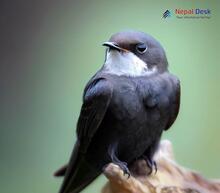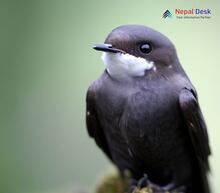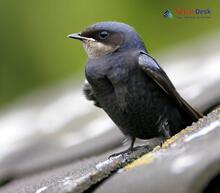Nestled among the majestic peaks and lush valleys of Nepal, lies an intriguing variety of bird life. One particular bird genus that captures the attention of bird enthusiasts and nature lovers alike is Apus, commonly known as Swifts. These fascinating avian creatures intrigue us not only with their incredible aerial acrobatics but also their intriguing lifestyle. Let's embark on a journey to uncover the unique traits and captivating world of these wonderful winged inhabitants of Nepal.
Masters of the Sky: The Swift Aerial Abilities
One of the most captivating aspects of the Apus genus is their astonishing aerial prowess. Swifts spend much of their lives in flight, covering vast distances effortlessly while hunting for insects mid-air. Their streamlined bodies and long, narrow wings make them ideally suited for high-speed flight and agile maneuvers in pursuit of prey. Catching a glimpse of these remarkable birds in action is truly a sight to behold.
A Cozy Home at Exceptional Heights: Nesting Habits
The awe-inspiring nature of the Apus genus extends to their nesting preferences as well. Utilizing natural environments such as cliff faces, rock crevices, or even man-made structures like buildings and bridges, these nimble birds build their nests in elevated locations. These strategic nesting sites offer swifts protection from predators and provide them with convenient launching points for their airborne adventures.
Migratory Marvels: A Seasonal Phenomenon
Many species within the Apus genus embark on extraordinary migratory journeys each year. As highly adapted fliers, they cover thousands of kilometers in search of favorable feeding grounds and breeding locales. In Nepal, this seasonal phenomenon can be observed during both the pre-monsoon (March – May) and post-monsoon (September – November) periods when several species pass through or make temporary residences in this breathtaking Himalayan nation.
Conservation and the Role of Swifts in Ecosystems
As captivating as the Apus genus may be, their existence is not without challenges. Habitat destruction, climate change, and human interference pose major threats to these remarkable birds. Swifts serve as vital components of ecosystems, playing a significant role in pest control by feeding on insects and acting as pollinators for certain plants. Their presence is critical to maintaining ecological balance; thus, conservation efforts are crucial to ensure these extraordinary creatures continue to grace the skies of Nepal for generations to come.
In conclusion, the Apus genus offers an enthralling insight into the world of Nepal's bird life. Astonishing aerial acrobats with remarkable nesting habits and migratory tendencies, these swifts are captivating members of the avian world deserving admiration and appreciation. As we cherish these fascinating creatures, let us also remember our responsibility in safeguarding their existence and the vital role they play in maintaining ecological equilibrium.




